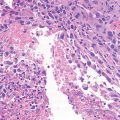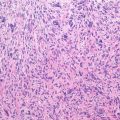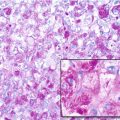Piero Picci, Marco Manfrini, Nicola Fabbri, Marco Gambarotti and Daniel Vanel (eds.)Atlas of Musculoskeletal Tumors and Tumorlike Lesions2014The Rizzoli Case Archive10.1007/978-3-319-01748-8_44
© Springer International Publishing Switzerland 2014
44. Chemotherapy in Osteosarcoma
(1)
Chemotherapy Ward of Musculoskeletal Tumors, Istituto Ortopedico Rizzoli, Bologna, Italy
Abstract
Treatment of osteosarcoma requires a combined approach of surgery of the primary tumor and systemic chemotherapy.
Treatment of osteosarcoma requires a combined approach of surgery of the primary tumor and systemic chemotherapy.
The use of chemotherapy has significantly changed prognosis of patients with osteogenic sarcoma. In the past, when patients received only surgery, survival rate was lower than 20 % (Campanacci 1999).
Standard strategy of chemotherapy for osteosarcoma is based on primary chemotherapy and delayed surgery followed by adjuvant chemotherapy.
The use of chemotherapy before surgery (neoadjuvant) was introduced in the 1970s and was widely adopted since it offers the opportunity of evaluating chemotherapy-induced tumor necrosis by histological examination of the resected surgical specimen (Rosen et al. 1982).
The degree of tumor necrosis used as a marker of chemosensitivity proved to be an important factor predictive of survival. Also in a recent paper exploring several prognostic factors of survival in nonmetastatic osteosarcoma, chemotherapy-induced tumor necrosis still retains prognostic significance (Bacci et al. 2006). Imaging techniques such as PET and dynamic magnetic resonance have been assessed to predict the pathological response (Denecke et al. 2010; Kong et al. 2013).
Microarray technology has been recently investigated to predict chemotherapy response, and a multigene predictive model was developed to classify good and poor responders to preoperative chemotherapy (Man et al. 2005).
44.1 Choice of Chemotherapy
Most chemotherapy regimens adopted for osteogenic sarcoma are based on methotrexate, cisplatin, doxorubicin, and ifosfamide.
It is well known that when only CDP and ADM are used, a probability of DFS around 45 % can be expected (Whelan et al. 2012).
Strategies of chemotherapy based on the use of the four active drugs lead to a probability of DFS around 60–65 % (Bacci et al. 2000; Fuchs et al. 1998; Ferrari et al. 2005; Meyers et al. 2005).
It is a matter of discussion whether all patients require intensive and prolonged treatment based on all four active drugs (Anninga et al. 2011).
In a recent study, the Italian Sarcoma Group (ISG) demonstrated that IFO can be given postoperatively and only to patients with a poor pathological response to primary chemotherapy based on MTX, CDP, and ADM (Ferrari et al. 2012). This approach allowed the same results with lower toxicity than a chemotherapy regimen that used all four drugs since the primary phase and for all patients.
A notable study from the Children’s Cancer Group and Pediatric Oncology Group has been recently reported in which classic cytotoxic chemotherapy was combined to immunotherapy. The study evaluated whether the addition of ifosfamide and/or muramyl tripeptide-phosphatidylethanolamine (MTP-PE) to methotrexate, cisplatin, and doxorubicin could improve prognosis (Meyers et al. 2005). MTP-PE is a component of the bacterial cell wall conjugated to phosphatidylethanolamine and encapsulated in liposomes with immunostimulating activity. Overall the probability of survival was higher in those patients treated with MTP-PE and a trend was reported in terms of EFS (Meyers).
Based on these data, EMA licensed the drug for the commercial use in Europe.
A new interest is growing around immunotherapy in an adjuvant setting in osteosarcoma patients. The EURAMOS 1 trial randomized patients with a good pathological response to the MAP regimen to receive a maintenance treatment with interferon. Unfortunately the results recently reported at the ASCO meeting did not show advantages for patients assigned to the interferon arm (Bielack et al. 2013).
44.2 Salvage Chemotherapy
While no doubt can be raised on the importance of chemotherapy in the first-line treatment of osteosarcoma, the use of chemotherapy after relapse is still under discussion. Complete surgical remission of all sites of recurrence is pivotal for survival after relapse, but the role of chemotherapy has been recently emphasized in patients with a relapse-free interval shorter than 24 months (Chou et al. 2005). In particular, the use of high-dose ifosfamide was recommended to prevent or delay a second recurrence (Chou et al. 2005). In a paper on the same topic, reporting a monoinstitutional experience, only complete surgical removal of metastatic disease was reported as important for long-term survival (Crompton et al. 2006; Ferrari et al. 2003).
The results obtained in patients with synchronous metastases, in spite of an aggressive surgical and chemotherapeutical approach, are worse than those obtained in patients without evident metastases at diagnosis (Daw et al. 2006; Bacci et al. 2003).
A recent paper reported improved results in patients metastatic at presentation who received MTP-PE added to the classical chemotherapy (Chou et al. 2009).
Stay updated, free articles. Join our Telegram channel

Full access? Get Clinical Tree






